Noel says, 'the best way to use hebes is to mix them with similar sized plants so when you do need ti replace on, the gap won't be too large. The good news is they work with many different styles of planting.'
Here is our guide on growing hebes
1
Hebe 'Midsummer Beauty'
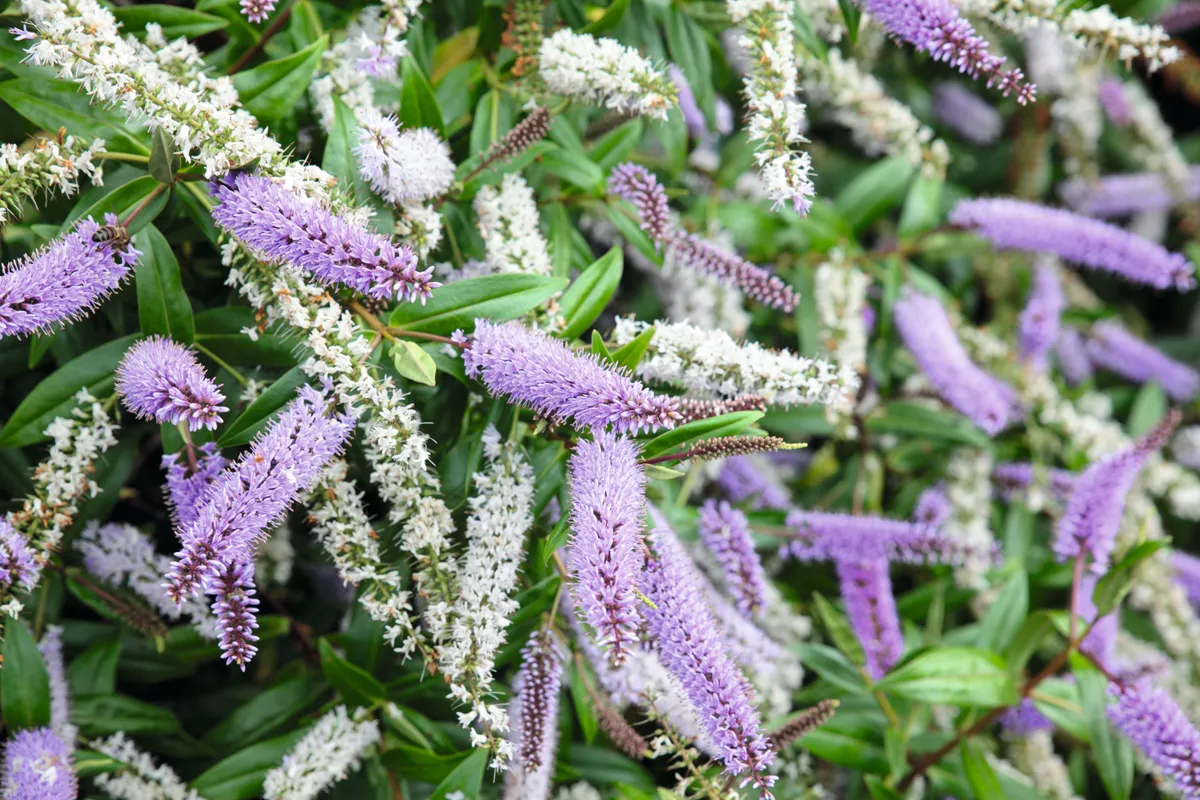
A large hebe with an upright habit and elegant, narrow, gren leaves. Spikes of pale-violet flowers, which can be an impressive 30cm long, fade to white. Less hardy than average.
1.5m. RHS H4, USDA 9a-10b.
2
H. rakaiensis
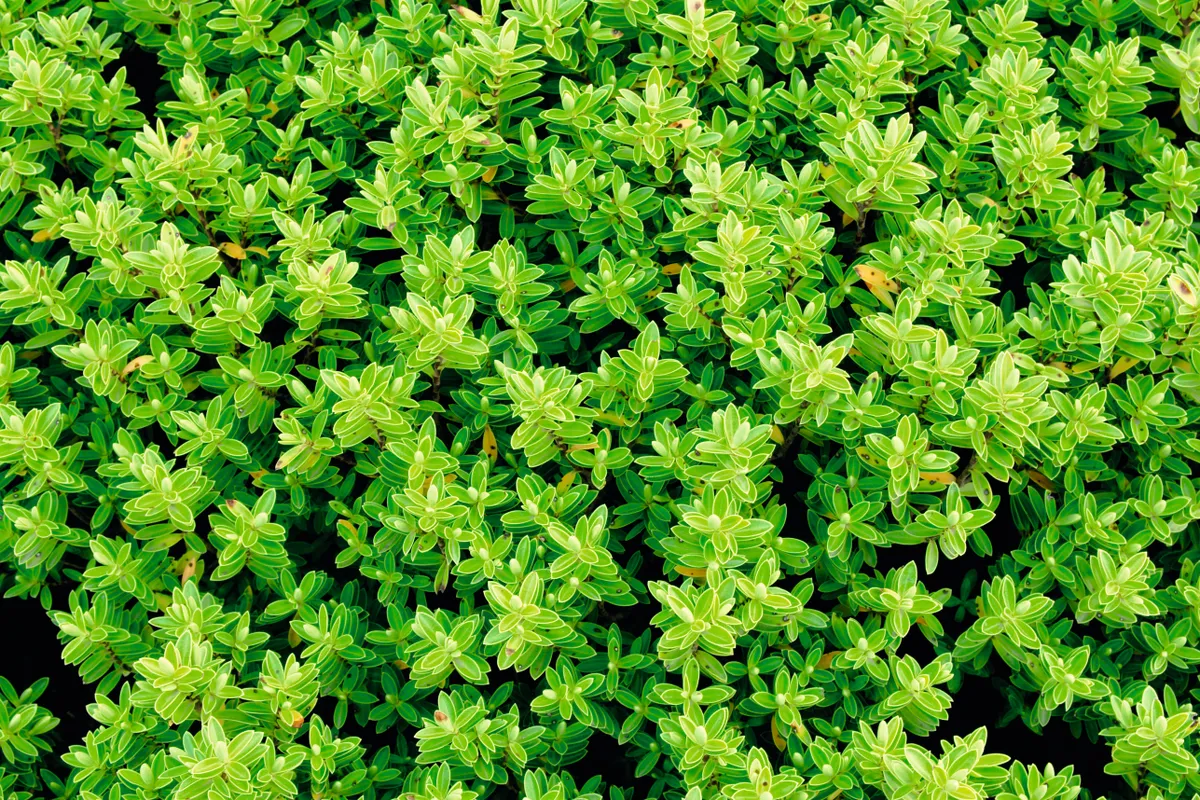
Forms a tight dome of light-green foliage, and produces white flowers from midsummer. Relatively hardy, it originates from the high moorland zone of New Zealand's South Island.
90cm. RHS H4.
3
H. ochracea 'James Stirling'
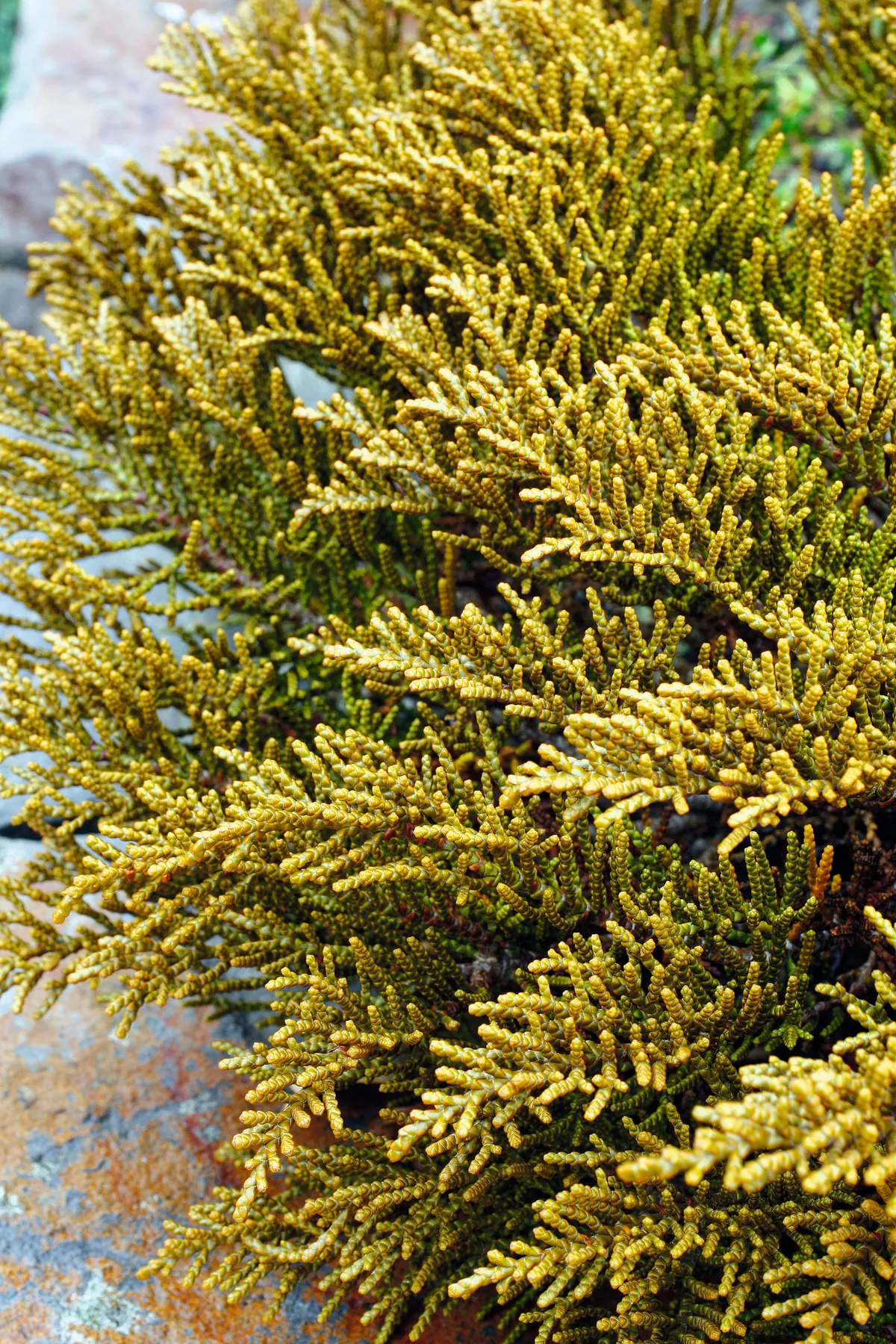
A robust garden plant with unusual yellow-toned 'whipcord' foliage and low-spreading habit. Flowers are very small and white. Distinctly hardier than average.
50cm x 80xm. USDA 6a-10a.
4
H. 'White Gem'
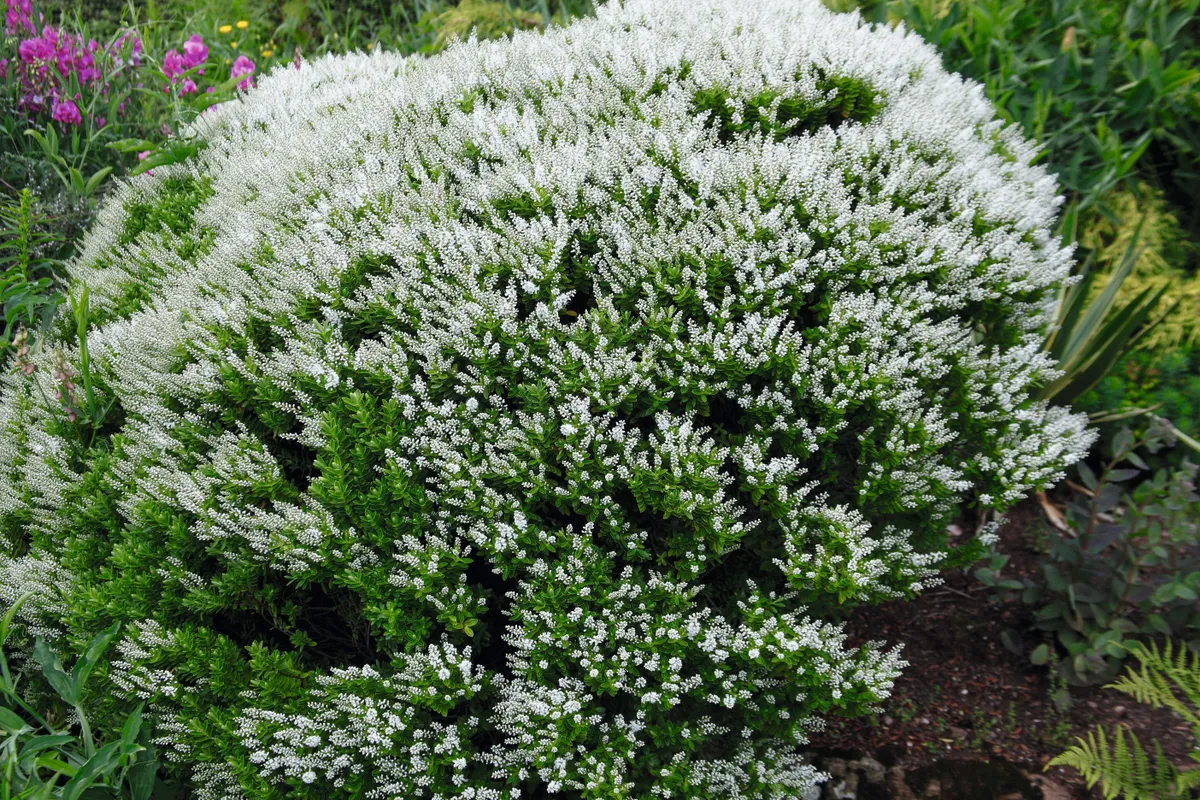
A fairly large hybrid of H. brachysiphon with fresh-green leaves and white flowers in early summer. Its relatively upright habit means that it is a useful plant for low-level hedging.
5
H. 'Emerald Gem'
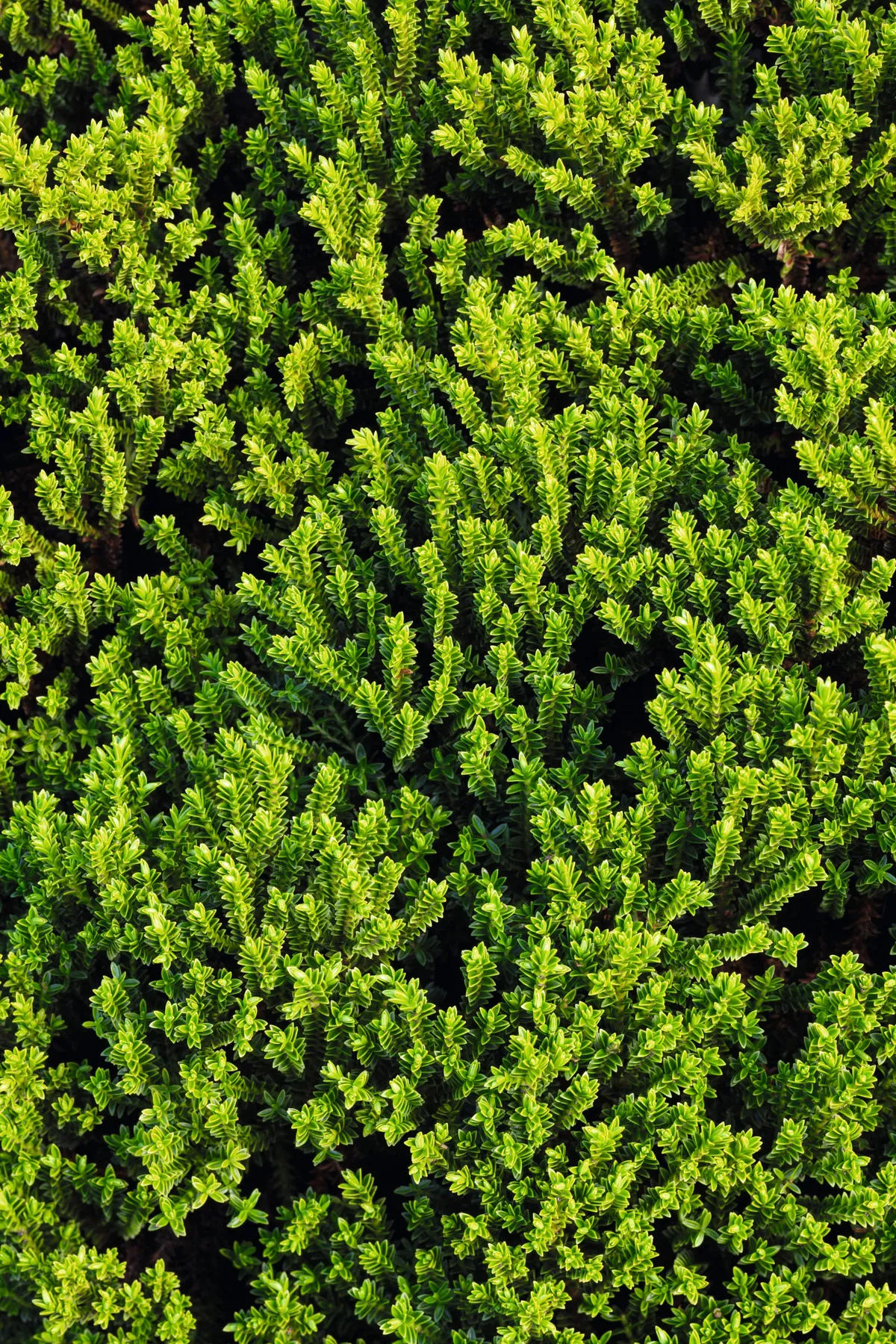
Forms a compact dome of very small, dense, green foliage. As with all the very small-leaved hebes, its flowers, if they appear at all, are relatively insignificant. Considered hardier than average.
30cm x 30cm.
6
H. 'Great Orme'
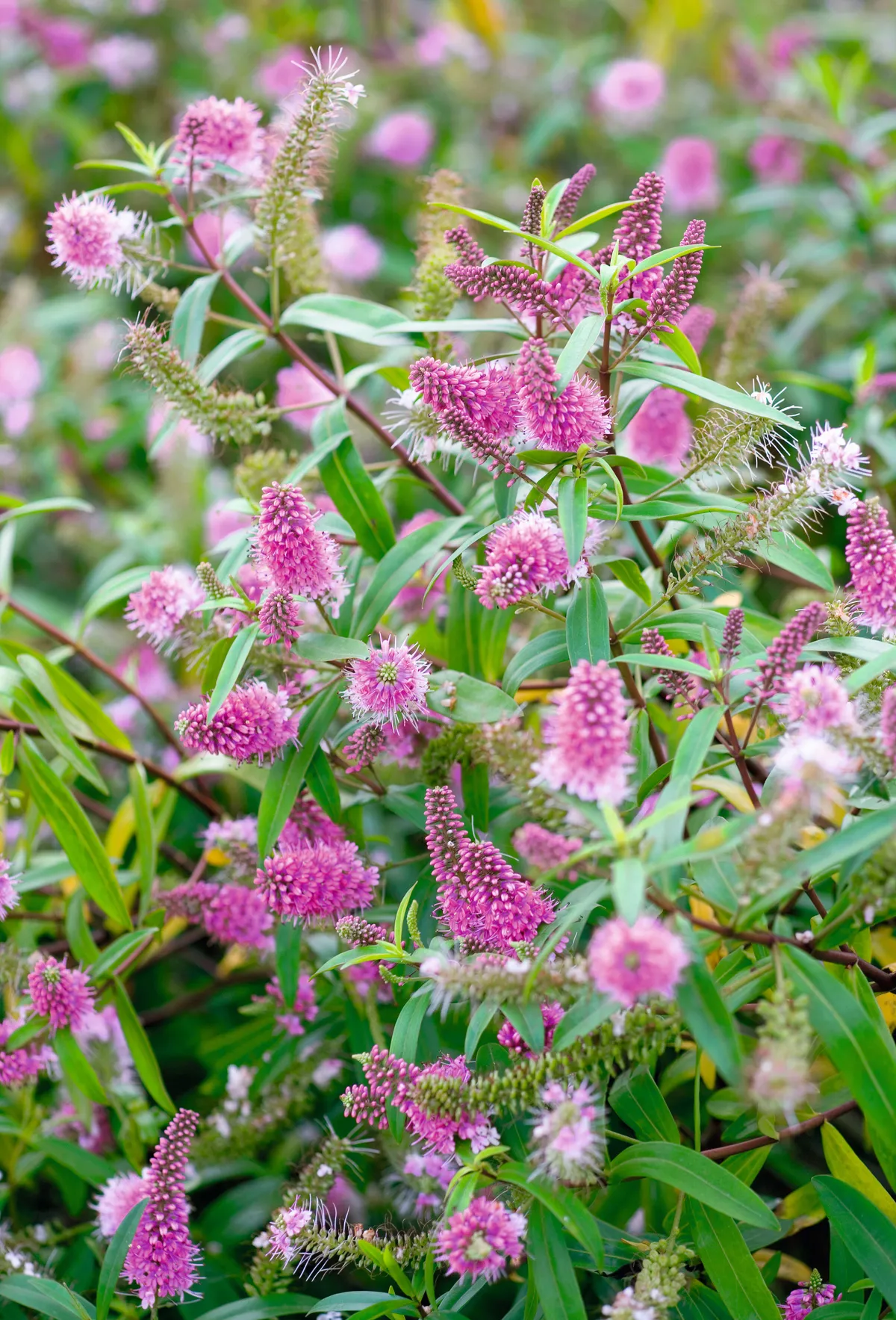
One of the larger cultivars, it has an open habit and long, pointed, green leaves. In late summer to autumn it produces bright-pink flowers. A little less hardy than average, as indeed are most of the pink cultivars.
1.4m x 12m. USDA 8a-10b.
7
H. 'Nicola's Blush'
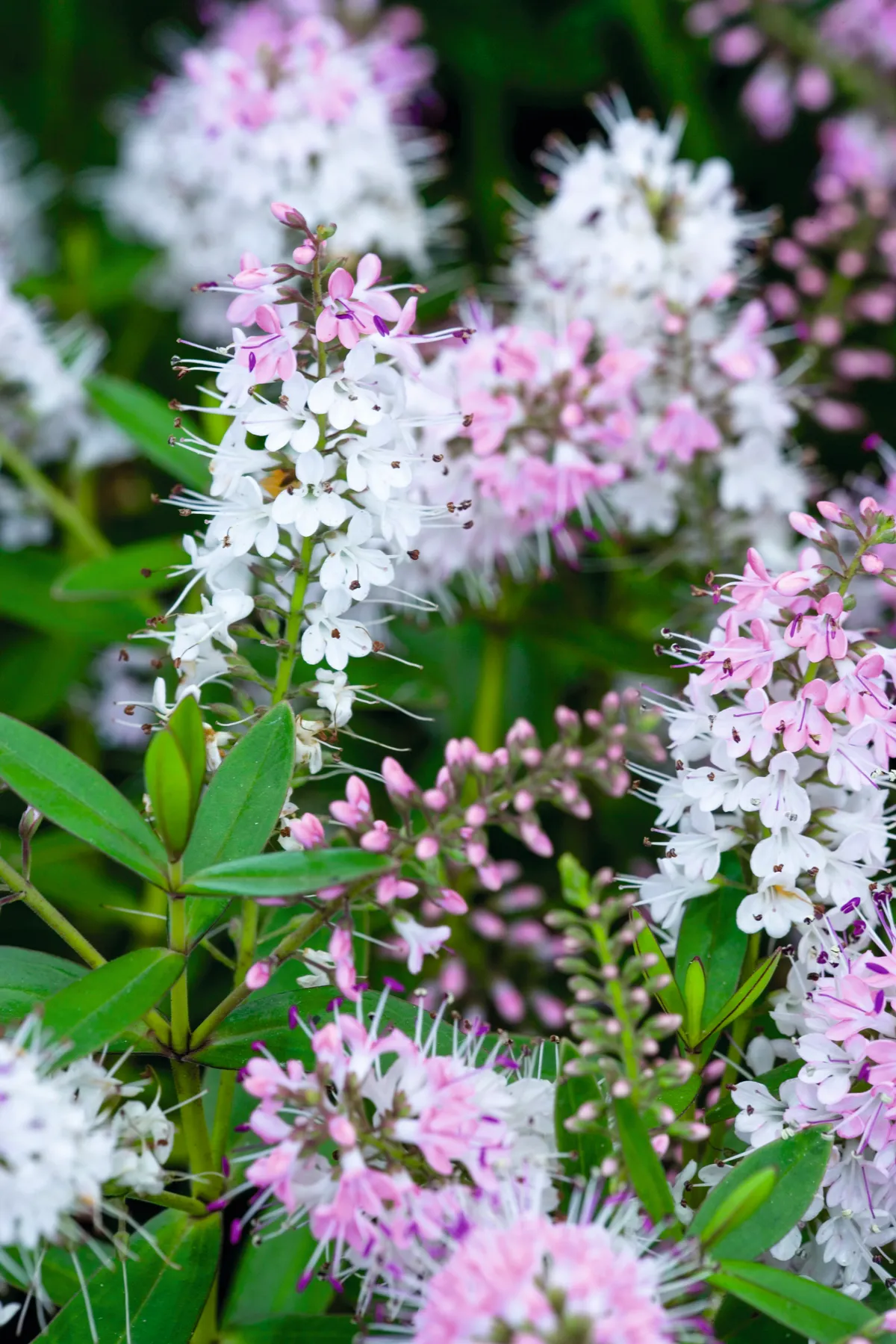
A lovely cultivar with mid-green leaves that colour purple in winter. Its pink flowers fade to white, creating a two-tone display that can last off and on from early summer until late winter.
90cm. RHS H4, USDA 8a-10b.
8
H. 'Oratia Beauty'
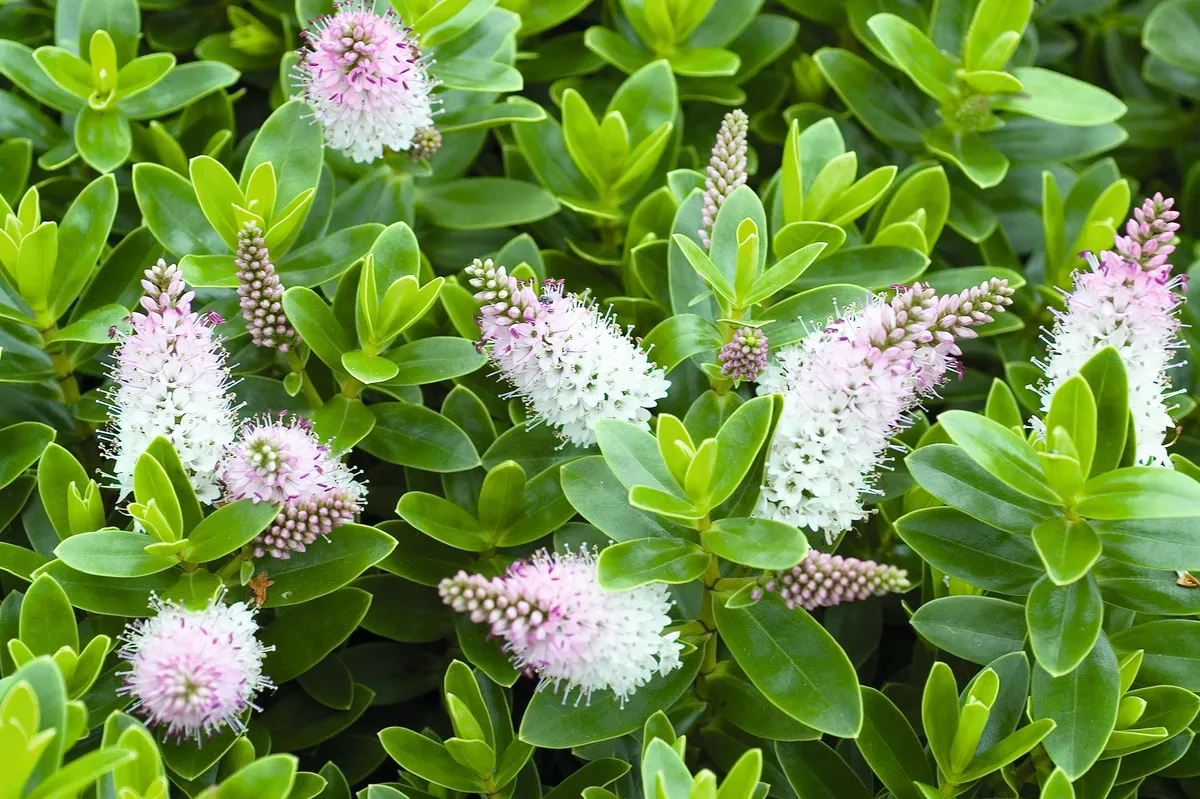
In midsummer pink buds open out to form attractive white flowers and these remain in bloom over a relatively long flowering period. Leaves are green and pointed.
80cm. RHS H4, USDA 8a-10b.
9
H. albicans
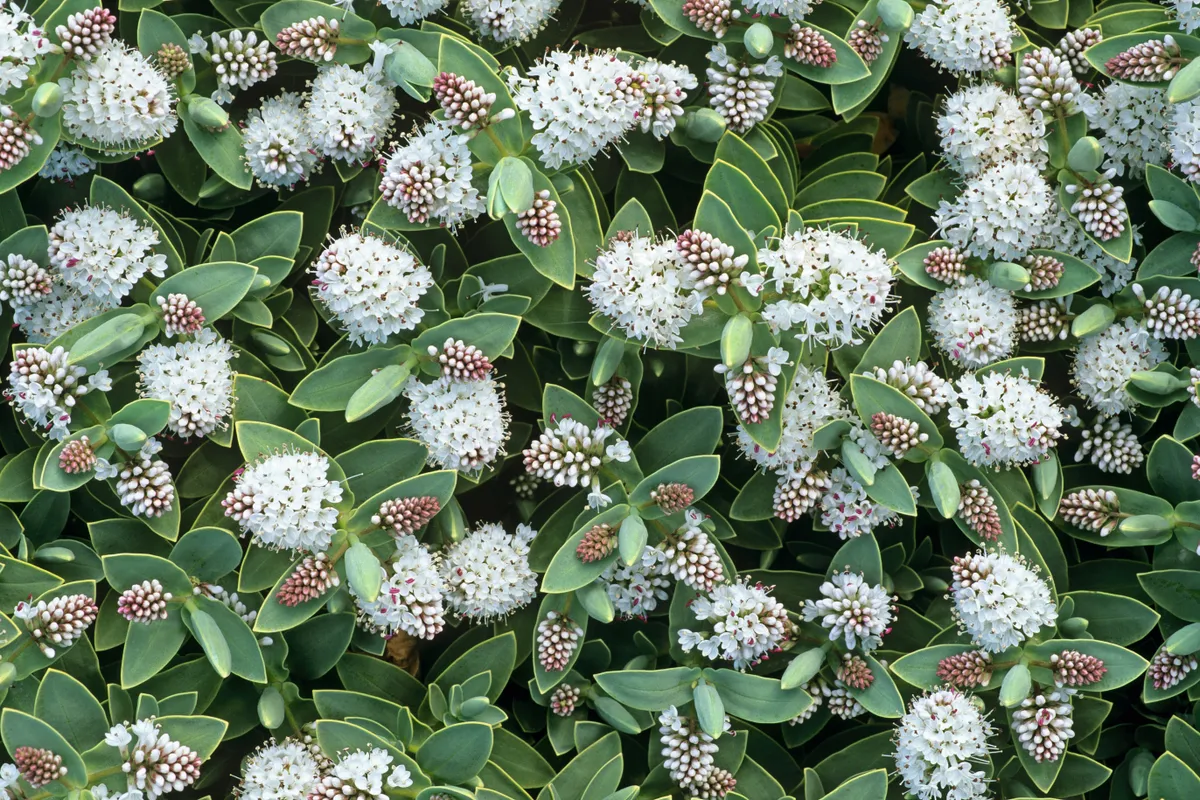
A popular cultivar for edging borders or for stylish ground cover. Short flower spikes are produced in misdumer but its dense, matt grey-green foliage is the real draw.
50cm x 50cm. USDA 9a-10b.
10
H. 'Red Edge'
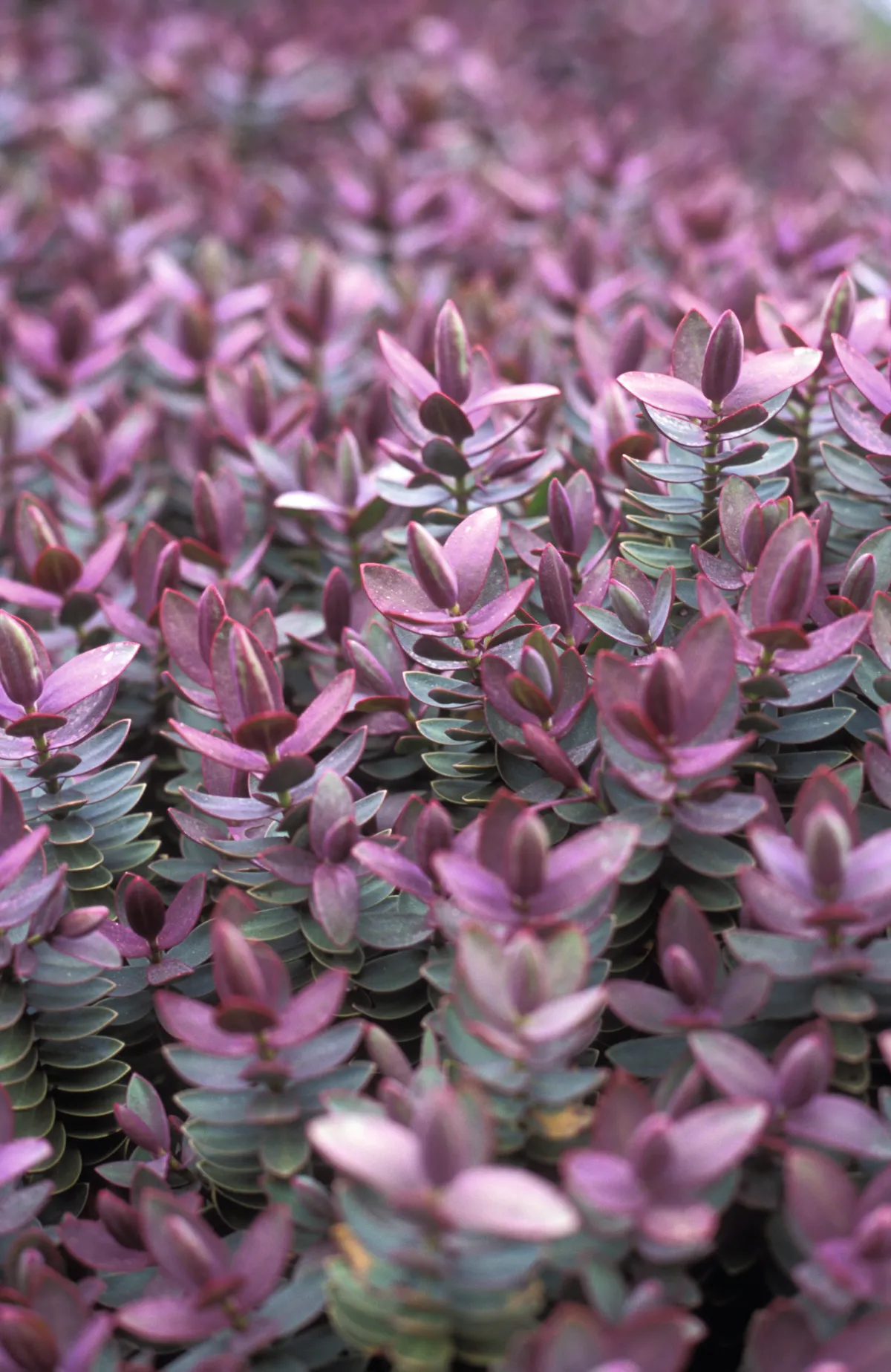
Young leaves of this densely rounded shrub have a pink tone that remains on the leaves' margins as they mature. Pale-lilac flowers are produced on older plants in early summer.
70cm x 70cm. USDA 9a-10b.
11
H. 'Mrs Winder'
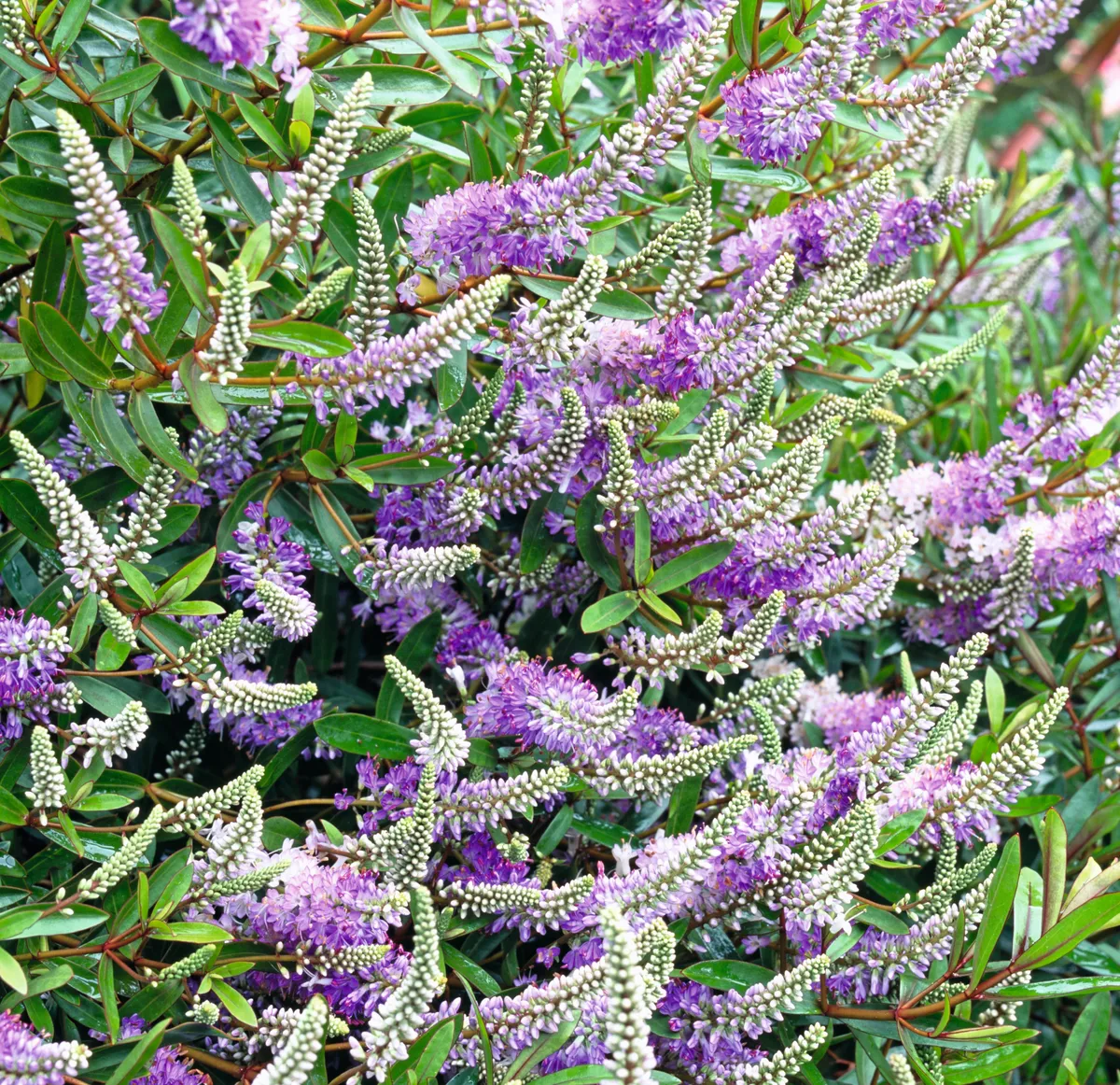
Another cultivar that generally is grown more for its foliage, which is especially dense and dark than for its flowers. The purple tone of the foliage is particularly appreciated in a winter garden.
1m x 1m. RHS H4.
12
H. x andersonii 'Andersonii Variegata'
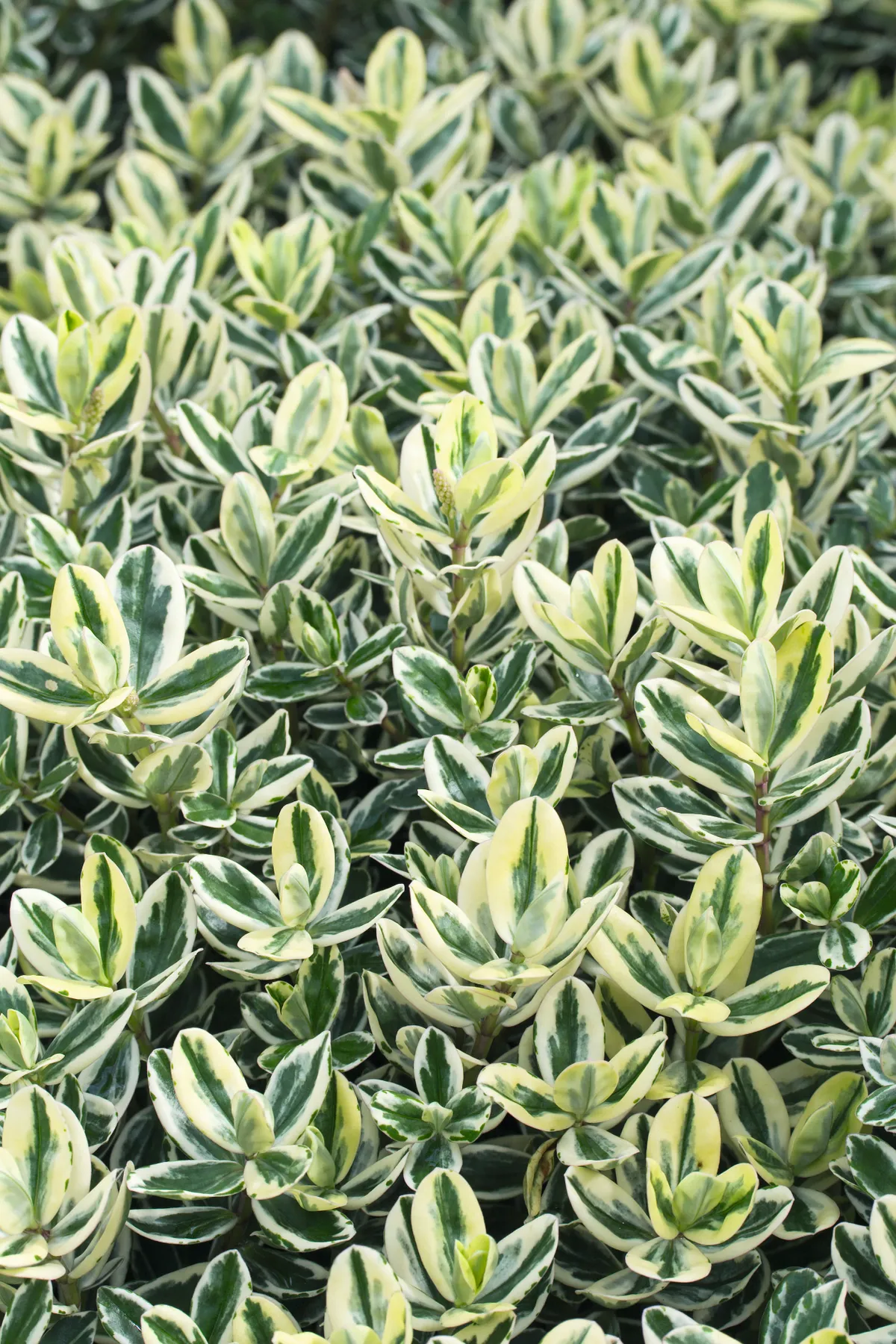
A cultivar that dates back to the 1860s. It quickly forms a compact mound of variegated foliage and bears light-purple flowers in midsummer that gradually fade to white. Less hardy than average.
2m.
13
H. 'Margret'
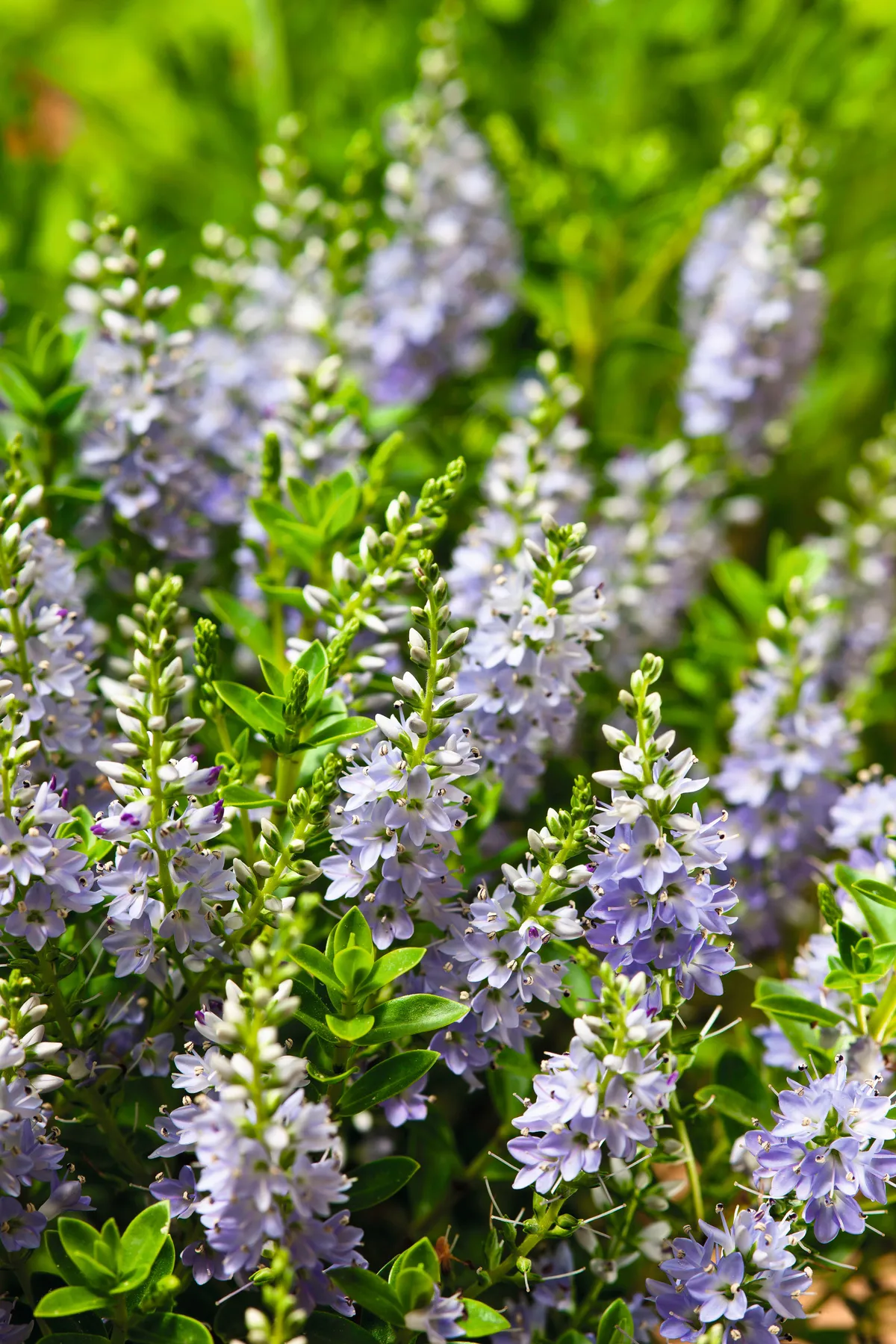
Mauve-blue flowers that fate to white adorn this compact hebe from mid to late summer. It was raised in Yorkshire, which is a good recommendation for its hardiness.
50cm. USDA 6a-10a.
14
H. x franciscana 'Blue Gem'
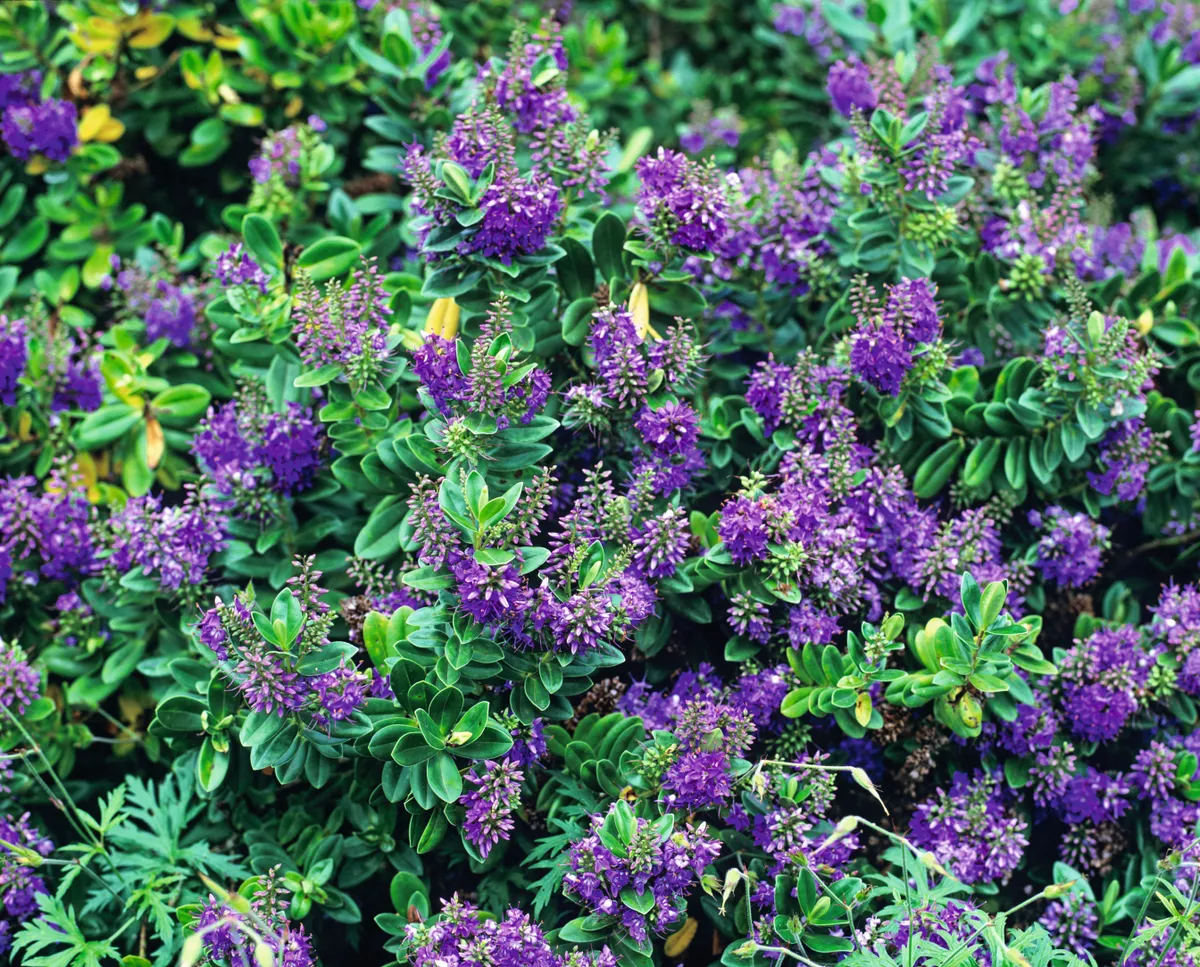
Shiny, pointed green leaves turn purple in winter. Long narrow clusters of mauve flowers are produced in midsummer and very often again in the autumn. In fact, this is one of those hebes that can actually flower at Christmas.
1.2m x 1.2m.
Find out more
The website of the hebe society, hebesoc.org